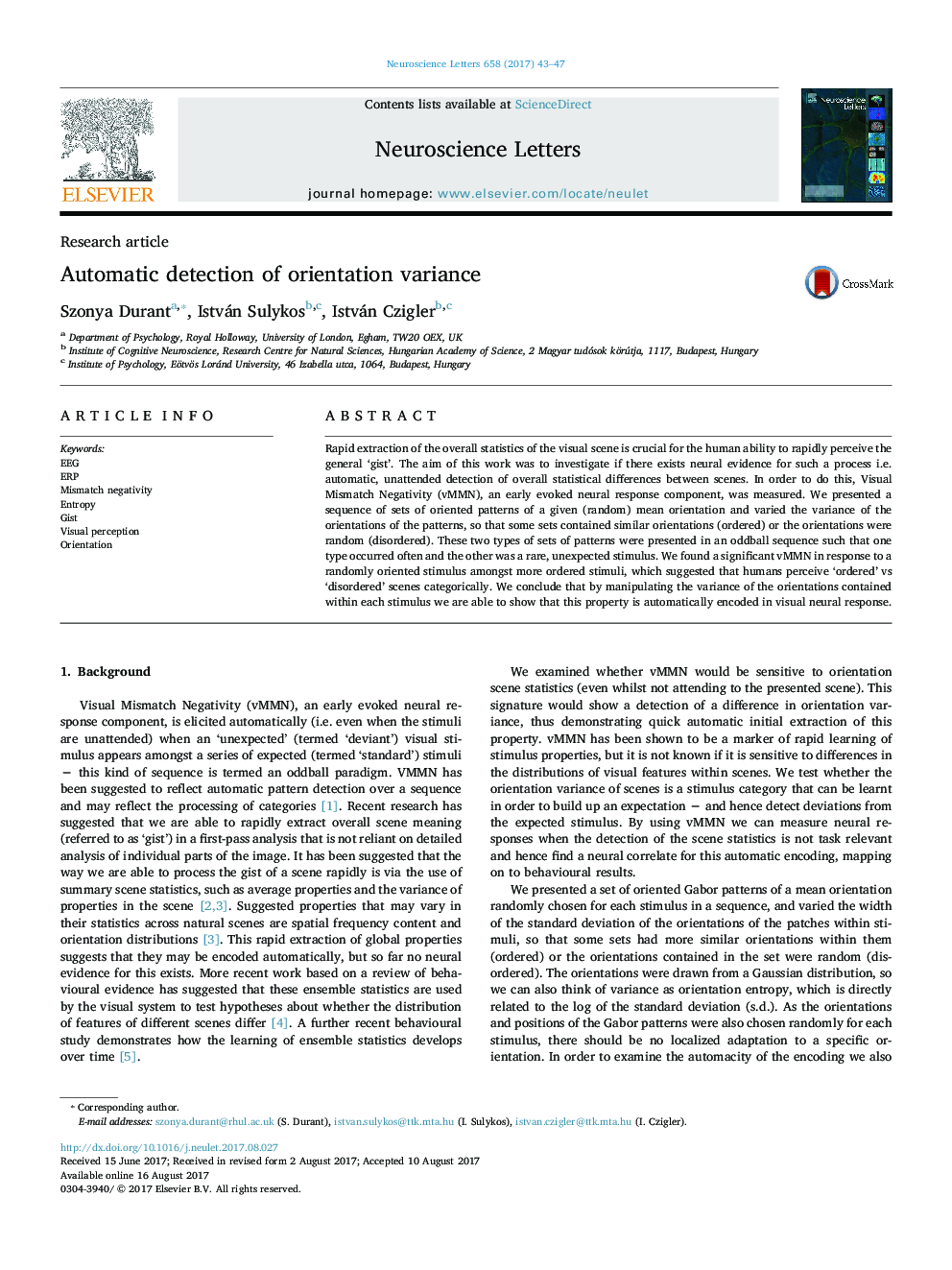| Article ID | Journal | Published Year | Pages | File Type |
|---|---|---|---|---|
| 5738070 | Neuroscience Letters | 2017 | 5 Pages |
â¢Orientation variance was manipulated in sequences and neural activity recorded.â¢Humans can automatically (without attention) extract the variance within a visual scene.â¢This is a detection of a difference between “ordered” and “disordered” categories.â¢We provide neural evidence of rapid processing of summary statistics.â¢This signal may be an indicator of gist processing â extracting global properties.
Rapid extraction of the overall statistics of the visual scene is crucial for the human ability to rapidly perceive the general 'gist'. The aim of this work was to investigate if there exists neural evidence for such a process i.e. automatic, unattended detection of overall statistical differences between scenes. In order to do this, Visual Mismatch Negativity (vMMN), an early evoked neural response component, was measured. We presented a sequence of sets of oriented patterns of a given (random) mean orientation and varied the variance of the orientations of the patterns, so that some sets contained similar orientations (ordered) or the orientations were random (disordered). These two types of sets of patterns were presented in an oddball sequence such that one type occurred often and the other was a rare, unexpected stimulus. We found a significant vMMN in response to a randomly oriented stimulus amongst more ordered stimuli, which suggested that humans perceive 'ordered' vs 'disordered' scenes categorically. We conclude that by manipulating the variance of the orientations contained within each stimulus we are able to show that this property is automatically encoded in visual neural response.
